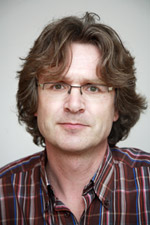By: Gijs van Wulfen
The race for the South Pole was a big event at the beginning of the twentieth century. Roald Amundsen was described as practical, pragmatic and ruthlessly ambitious. As a child Amundsen dreamed of being a polar explorer. In this article Gijs van Wulfen looks at his story as a source of inspiration for innovators.
Amundsen’s original plan was to go to the North Pole. It was in 1909, after hearing that first Frederick Cook and then Robert Peary had claimed the North Pole for America, that Amundsen decided to reroute to Antarctica. However, he kept these plans a secret out of fear of losing funding. On June 3, 1910 Amundsen left Oslo (Norway) for the south on the Fram, a vessel specially designed for polar travel. In August 1910, Amundsen alerted his men at Madeira that they would be heading to Antarctica. The crew chose to stay on board. He sent a telegram to the British explorer Robert Scott, also underway to the South Pole, notifying him: “BEG TO INFORM YOU FRAM PROCEEDING ANTARCTIC—AMUNDSEN.” There is little doubt that Amundsen deliberately sought an advantage. When asked by the press for a reaction, Scott replied that his plans would not change and that he would not sacrifice the expedition’s scientific goals to win the race to the Pole.
On October 19, 1911 Amundsen and four companions left his Antarctic base at the Bay of Wales on four light sledges and 52 dogs. On December 14, 1911 the team arrived at the South Pole, 33 to 34 days before Scott’s group. After 99 days, Amundsen’s team returned healthy and unharmed. However, on Scott’s return trip to base, he and his four companions all succumbed to starvation and extreme cold.
Amundsen’s expedition benefited from the simple primary focus of being first which entailed a thorough preparation, meticulous planning, knowledge of Inuit Eskimo wilderness techniques, good equipment, appropriate clothing, a skilled handling of the sled dogs and the effective use of skis. Amundsen’s attention to detail is evident in the improvements he made to the boots they would wear. In his preparation, he took the boots apart; making them large enough to fit a wooden sole. The weather could drop to any temperature without the cold getting through the wooden soles and the seven pairs of stockings. Amundsen’s careful preparation also included his study of innovations in snow goggles. He chose leather goggles with a slit opening for the eyes (the Bjaaland patent). They gave perfect protection and no one on the team experienced signs of snow blindness. In contrast to the tragic misfortunes of Scott’s team, Amundsen’s polar trek proved relatively smooth and uneventful.
THE success factor of Amundsen was preparation; the ability to foresee difficulties and take precautions to meet or avoid those difficulties.
“I may say that this is the greatest factor—the way in which the expedition is equipped—the way in which every difficulty is foreseen, and precautions taken for meeting or avoiding it. Victory awaits him who has everything in order — luck, people call it. Defeat is certain for him who has neglected to take the necessary precautions in time; this is called bad luck.” -Amundsen
In comparing the achievements of Scott and Amundsen, most polar historians generally accept that Amundsen was skilled with skis and dogs, and he had a general familiarity with ice conditions, which gave him a considerable advantage in the race to the Pole. It’s a wonderful source of inspiration for innovators. It has everything to do with preparation. So you better choose the right innovation challenge at the right moment with the right team going on the right track with the right equipment and the right support. You can only start an innovation project once for the first time.
By Gijs van Wulfen
About the author
 Gijs van Wulfen (The Netherlands, 1960) is the founder of the FORTH innovation method. FORTH is an effective and structured method for ideating innovative products and services. The method is published in his inspiring and practical book Creating Innovative Products and Services’ (Gower, 2011).
Gijs van Wulfen (The Netherlands, 1960) is the founder of the FORTH innovation method. FORTH is an effective and structured method for ideating innovative products and services. The method is published in his inspiring and practical book Creating Innovative Products and Services’ (Gower, 2011).
He helps organisations to kick start innovation by facilitating the FORTH innovation method and advising companies on their innovation strategy, process and organisation. His clients are international companies in industry and services, as well as non-profit organisations in government and health. Gijs also trains facilitators in his method. His dream is to make FORTH the most used method for the front end of innovation around the world.
Gijs is a both presenter and chairman at several (international) innovation conferences, like the ISPIM Conferences and the European Conference on Creativity and Innovation. He is also founder of the yearly Dutch Innovation Conference on creating new products: ‘Nieuwe Producten Bedenken’.
